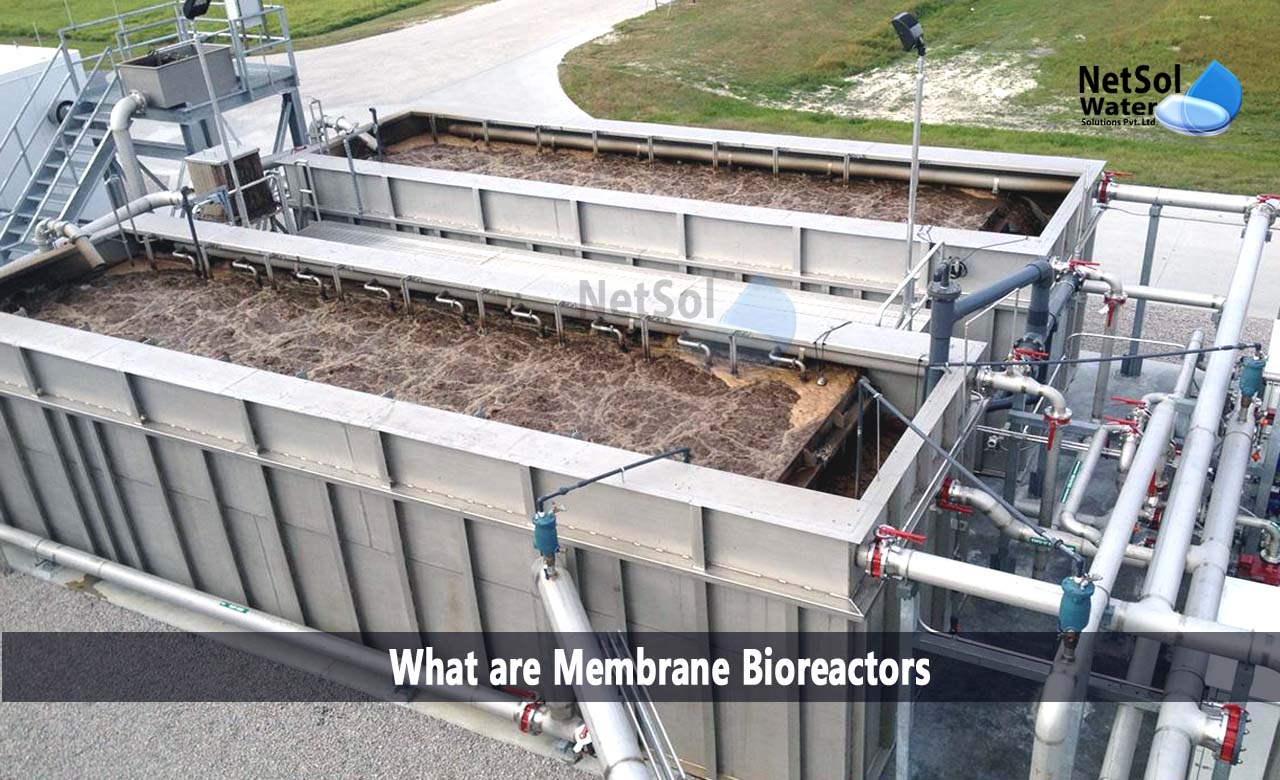What are Membrane Bioreactors (MBRs)?
Membrane Bioreactors (MBR) are wastewater treatment methods that combine a biological process, with a permeable or a semi-permeable membrane. With plant capacities up to 80,000 people equivalents, it combines a membrane technique like microfiltration or ultrafiltration with a suspended growth bioreactor, and is commonly employed for municipal and industrial wastewater treatment.
Due to the fact that it is a very technological solution, professional personnel and expert design are required. Additionally, it is a pricey but effective treatment option. The MBR technology makes it possible to modernise ageing wastewater treatment facilities.
Advantages of membrane bioreactors
1: Removing secondary clarifiers and tertiary filtration techniques reduces the wastewater treatment plant's footprint.
2: In some cases, footprint can be further decreased by eliminating or minimizing other process units, such as digesters or UV disinfection dependent upon governing regulations.
3: Sludge age can be extended reducing sludge output.
4: It produces high-quality effluent.
5: It is capable of loading at a high rate.
Disadvantages of membrane bioreactors
1: High costs for operations and capital.
2: Complexity and fouling of the membrane.
3: Energy prices.
Process of treatment in membrane bioreactors and fundamental design principles of MBRs
Membrane bioreactors offer a high level of organic and suspended solids removal, by combining traditional biological treatment methods such as activated sludge with membrane filtration. These systems can also offer a high level of nutrient removal when constructed properly.
1: The membranes are immersed in an aerated biological reactor in an MBR system. The membranes' porosities, which are categorised as being between micro and ultrafiltration, range from 0.035 microns to 0.4 microns (depending on the manufacturer).
2: This level of filtration eliminates the sedimentation and filtration procedures, generally used for wastewater treatment and enables high quality effluent to be drawn through the membranes.
3: The biological process can function at a much greater mixed liquor concentration, since sedimentation is not required. As a result, the amount of process tankage needed is drastically reduced, and many current plants can be modified without the need for new tanks.
4: The mixed fluid is normally maintained at the 1.0-1.2% solids range, which is 4 times that of a traditional plant, to enable optimal aeration and scour around the membranes.
Membranes used in MBR Process
Membranes used are microfiltration (MF) or ultrafiltration (UF) and they achieve solid-liquid separation, during MBR wastewater treatment. Simply said, a membrane is a two-dimensional material that is used to separate fluid components, typically based on their relative size or electrical charge.
Semi-permeability is the ability of a membrane to permit the movement of only particular molecules. Separated components in this physical process don't alter chemically at all. Permeate refers to substances that pass through membrane pores, whereas concentrate or retentate refers to substances that are rejected.
Membrane configurations in MBR
There are now five different membrane configurations in use:
· Fiber with holes (HF)
· Flat sheet (FS)
· Spiral-wound plates and frames
· Filter cartridge with pleats
· Tubular
Pre-treatment in MBR
Fine screening is a crucial pre-treatment step in order to prevent undesired materials, from entering the waste stream that goes into the membrane tank. This prevents the membrane from being damaged by dirt and particles, minimizes solids build-up, increases membrane life, lowers operating costs, and ensures trouble-free operation and greater sludge quality.
Cost considerations in MBR
Although, MBR operating and capital expenditures (membranes, oxygen use, expert design, etc.) are more expensive than those of conventional process, it appears that the conventional process is upgraded even when conventional treatment is effective. This may be attributed to rising water costs, the necessity for water recycling, and stricter laws regarding effluent quality.
Operations and Upkeep in MBR
The majority of MBRs use recovery cleaning once or twice a year, when filtering is no longer reliable, and chemical maintenance cleaning every week that lasts 30 to 60 minutes.
Over time, this fouling accumulates and ultimately determines the membrane life-time. Every O&M task must be carried out by skilled professionals.
Fouling in MBR Systems
Fouling is one of the main drawbacks of the MBR process and results from interactions, between the membrane and the mixed liquor. It is exceedingly challenging to properly characterise and localise membrane fouling in MBRs, since it is a very complicated process with many interconnected causes. Both inorganic and organic fouling can be removed with oxalic acid and sodium hypochlorite.
Membrane fouling is mostly caused by:
· the adhesion of large molecules
· biofilm development on the membrane's surface
· inorganic matter precipitation
· the membrane ageing
Applicability of MBR Systems
Systems with membrane bioreactors are frequently utilized in industrial and municipal wastewater treatment facilities. MBRs are also appropriate for treating landfill leachate. It is a high-tech system that requires skilled designers and operators.
Sewage treatment plant manufacturers in India
Netsol Water is a corporation with roots in Greater Noida, and we have been offering India's top water and wastewater treatment facilities for many years. We have constantly provided clients in a range of industries with our best services.
According to the needs of the industry, we provide RO Plants, water softener, STPs, ETPs, with advanced technologies, such as MBR. For more information, contact us by email at enquiry@netsolwater.com, or through one of our social media sites (Instagram, or LinkedIn), or by phone at +91-9650608473.



